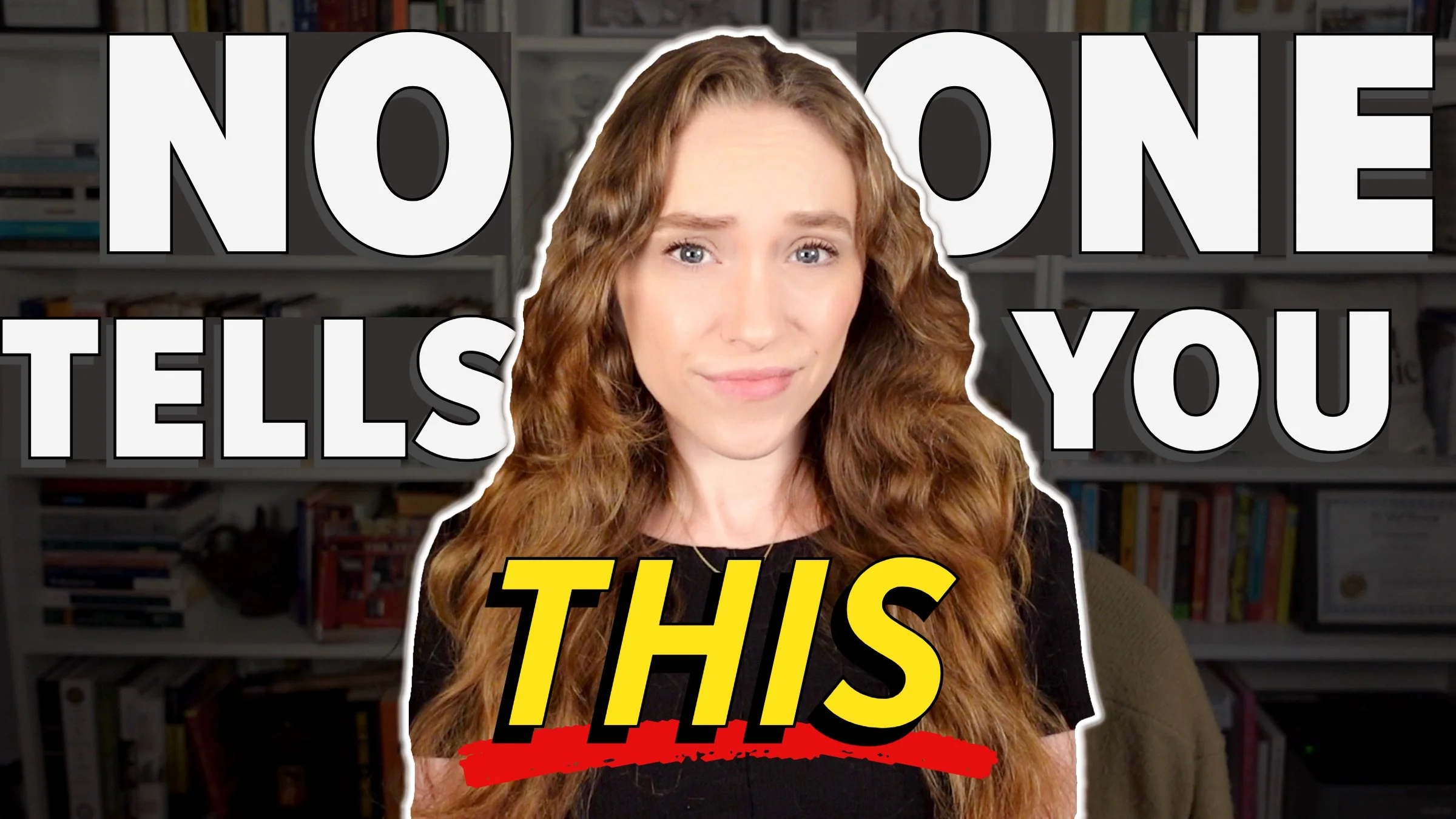Common Mistakes When Writing Multiple Storylines
HIT PLAY OR READ THE POST BELOW:
One of my favorite novel structures, which is also one of the most common novel structures, is a multiple storyline narrative. This is where a novel switches between different plot lines with each chapter or section and follows the stories as they progress simultaneously.
The reader can then follow different characters’ points of view across the same time period, or they could follow the same character across two different time periods. Sometimes these storylines intersect and sometimes they operate independently.
Writing multiple storylines can be tricky to pull off, so in this article I want to talk through the five most common mistakes I see in multiple-storyline novels. That way, if you're writing a novel with this structure, you can check your manuscript for these and ensure you are catching these mistakes.
Switching Storylines Too Frequently
When writing multiple storylines, if you switch between storylines after a page or so of text, the reader is going to feel jostled. There’s not enough time to situate themself in the narrative, so it can feel as if there’s whiplash from switching between characters, settings, and plot lines so quickly.
Make sure you spend ample time within each storyline. That way, the reader will be able to get situated, understand the characters, and get invested in each storyline before you move on to the next. Otherwise, the novel is going to pass by in a blur, and your reader likely won’t get immersed in any of the storylines.
Switching Storylines Infrequently
The next mistake to avoid is the opposite: switching storylines too infrequently. When writing a multiple storyline novel, you also want to ensure you don't sit with a particular storyline for too long, because it will still result in a narrative imbalance.
If a story sticks with one storyline for a long time, the reader is going to eventually wonder when the other storyline will kick in. They may also then get more invested in the dominating storyline, making the inevitable switch to the other storyline disappointing, rather than exciting. Additionally, sticking with one storyline for too long is also going to have an effect on the pacing, slowing down the plot momentum.
A general rule of thumb is if you have stuck with a particular storyline for two consequential scenes, then it's likely time to switch to the other one. In many cases, you can probably switch to the other storyline after just one consequential scene, so long as that scene isn't just a single page, as I mentioned in the last tip.
Now, when establishing the cadence of switching between your storylines, you want to make sure there is a nearly equal amount of pages dedicated to each storyline. So if you typically switch every 10 pages, try to keep that consistent. Of course, there can be exceptions per your story’s needs. But by staying consistent, the reader will be able to better ground themselves in each storyline and be equally engaged with them all.
Introducing a Storyline Too Late
When learning how to write a novel with multiple storylines, you want to set up the reader's expectations for all of the storylines as early in the novel as possible, ideally within the first twenty to forty pages. The first pages of any novel are critical for setting the reader's expectations, including which characters are important, what plot lines exist, and where the story is ultimately headed.
So, you need to signal to the reader as early as possible which storylines you are going to be switching between. If you wait longer than forty pages into your manuscript to introduce a new storyline, you run the risk of it feeling abrupt and jarring to the reader. It’ll be harder to get them invested in your new storyline and it will stick out, potentially in a negative way.
Dropping a Storyline
Every storyline you choose to include in your novel must have a well-developed beginning, middle, and end. Just as you don't want to randomly introduce a storyline partway through the novel, you don't want to randomly omit a storyline and have it disappear with no resolution.
Remember, you've made the reader invested in that storyline, so they're going to want to see it through. For the best balance, each storyline should begin at the beginning of the novel and end at the conclusion of the novel, with its own sense of resolution.
I'm not saying you have to tie everything up neatly, because I don't think all endings have to have things tied up in a bow. However, you do want the reader to get a sense of finality and resolution with each storyline.
Having Too Many Storylines
If you’re wondering how to write a novel with multiple storylines, chances are you’ve thought long and hard about what stories you’re trying to tell in this book. Sometimes, when you've written a novel with multiple storylines, the truth is you've actually written multiple novels entirely, especially if your novel is over 100,000 words. It is possible you've included too many stories into a single novel, so it might actually serve the story better if you omit one or more of the storylines.
This is an edit I have made several times when working on a structural edit with an author’s early draft. We come to the revelation that there are two, or in some cases three, novels all in one. So, in order to give each one its due attention, it needed to be broken up. So, if you’re in this situation, don’t feel bad. Consider it like a bonus: you have an extra novel on top of the novel you already wrote!
A general rule of thumb is that two to three storylines is the most manageable for a standard length novel. (Of course, there are exceptions even in best-selling books out there.) If you have more than three storylines in your novel, it's not completely off the table to keep them all. I would just advise proceeding with caution and asking yourself the hard question: is the reader still able to connect with each storyline and each protagonist in the way you intend? Or is the story so full of layers it’s hard to care about each individual story?
Think carefully about why you have the storylines you do, and ensure that they do all belong together.
I hope these tips help you understand the best practices and techniques when writing multiple storylines so you can craft a novel that engages the reader from beginning to end.
Thanks so much for reading and happy writing!





